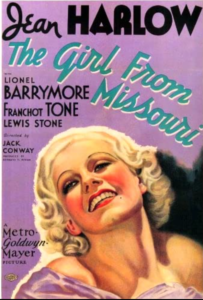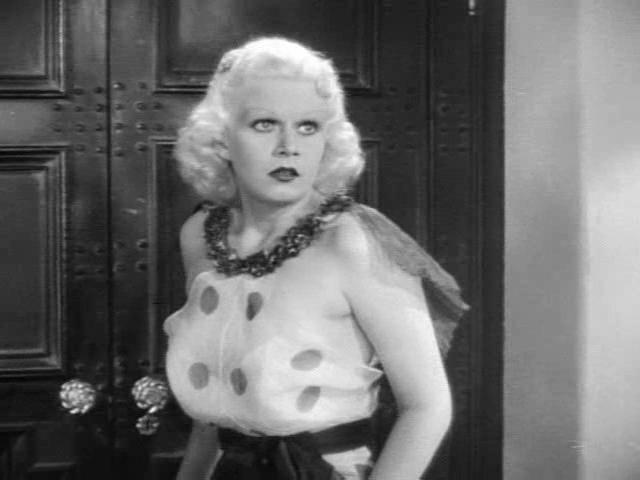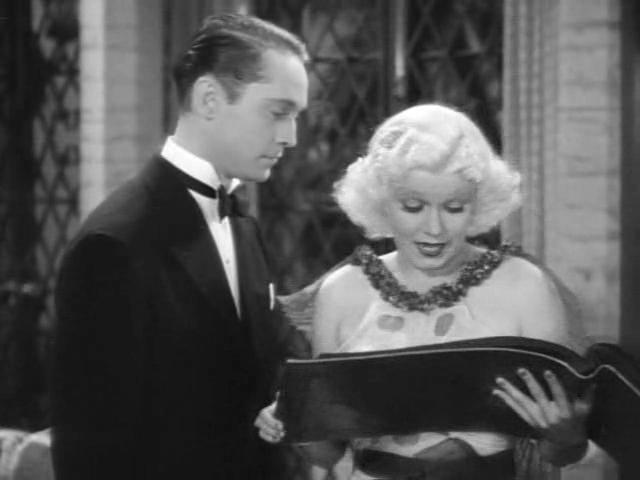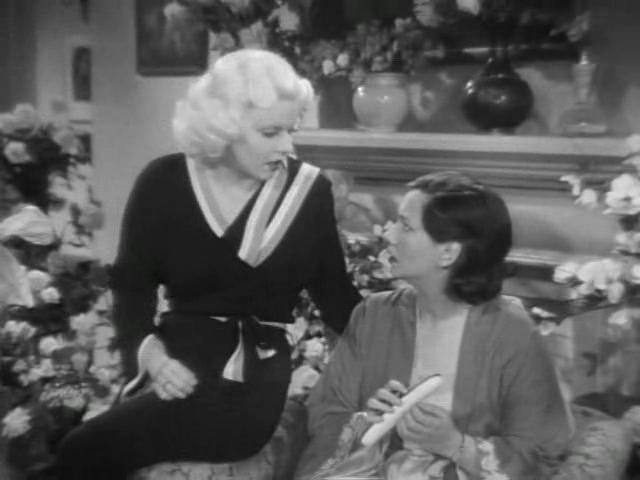Girl From Missouri, The (1934)
“You can make me cheap and common like a million others — but gee, I wish you wouldn’t!”
|
Synopsis: |
|
Genres, Themes, Actors, and Directors:
Review: Interestingly, The Girl From Missouri doesn’t rely on the old cinematic trope of mistaken identities to propel its narrative of cross-class romance: while there’s some of this at first (Harlow initially mistakes Barrymore for a waiter), truths are quickly revealed, and barriers arise not so much from misunderstandings as from sheer prejudice. While it’s not quite a classic — and its resolution comes far too quickly — … Missouri remains “must see” viewing simply for Loos’ ability to distill the essence of sexual double standards into a fast-moving, enjoyable romantic comedy. Note:This film bears some resemblance as well to How to Marry a Millionaire (1953), with Harlow a precursor to Bacall’s no-nonsense “Schatze”, and Kelly a close cousin to Grable’s “Loco”. Redeeming Qualities and Moments:
Must See? Categories
Links: |




One thought on “Girl From Missouri, The (1934)”
First viewing. A once-must for its place in cinema history, for its screenplay, and for Harlow.
A hard one to track down, for sure – but possibly the most unsung among Harlow’s work. If it’s not completely successful, it’s never less than entertaining – and the whole thing is worth it for the last ten minutes alone, which (if you ask me) pack a surprising wallop. This time out, Harlow is given a real opportunity to show what she could do when given good material. No, she was no Streep (she never knew how to rise above a mediocre script and make it and her shine) – but Harlow knew how to come up to the plate when what was written allowed her to do so. Watching her in this flick, you just want to be on her character’s side throughout, and you keep hoping things will go her way. You like her.
Though I’m a big Kelly fan, I’m slightly disappointed in her here – but that’s because she seems slightly miscast. She naturally has the ‘chum’ aspect on the nose, but it’s a little hard sensing her genuine, insatiable interest in and enjoyment of a variety of men. I wish she were a little more on the madcap side, as opposed to just ‘chummy and available’.
Tone and Barrymore turn in solid work as father and son, as does director Jack Conway. This is a rather lively romp, well worth a viewing.